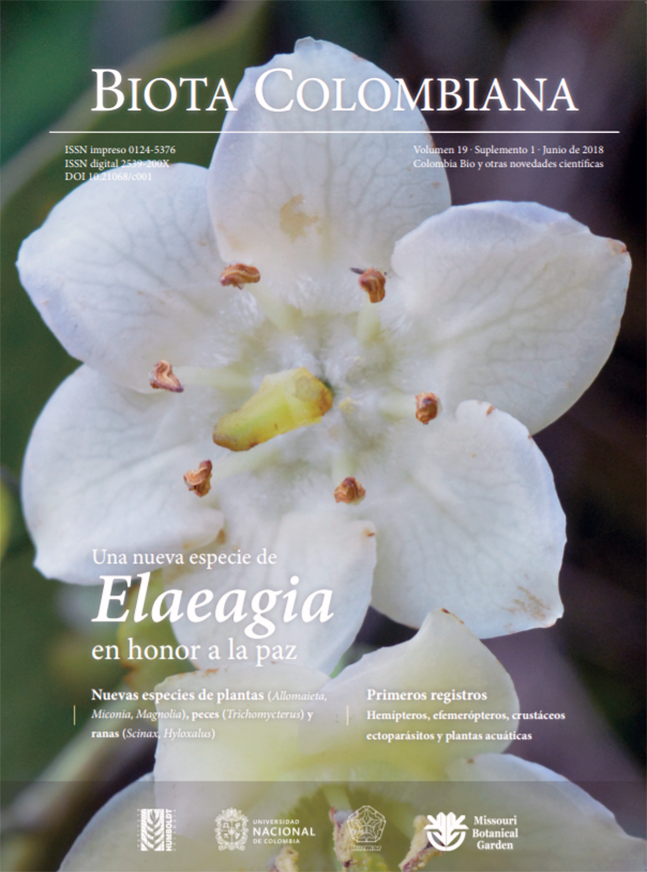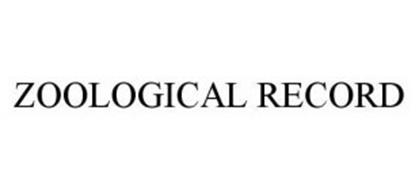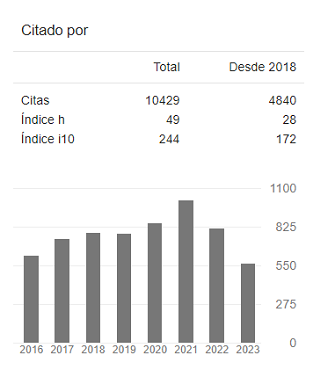Resumen (es):
Resumen (en):
Palabras clave:
Andean region, Subterranean habitat, Systematics, Taxonomy, Troglobite (en)
Referencias
Ardila-Rodríguez, C. A. (2016). Cinco nuevas especies de peces Tricomycterus para la region caribe – Colombia. Barranquilla, Departamento del Atlántico. N.2. 23 pp.
Ardila-Rodríguez, C.A. (2014). Trichomycterus nietoi sp. nov. (Siluriformes: Trichomycteridae) una nueva especie de pez del río Guachaca, Sierra Nevada de Santa Marta. Departamento del Magdalena - Colombia, 22 pp.
Bichuette, M. E & Trajano, E. (2008). Ituglanis mambai, a new subterranean catfish from a karst area of Central Brazil, rio Tocantins basin (Siluriformes: Trichomycteridae). Neotropical Ichthyology, 6 (1): 9–15.
Bichuette, M. E & Rizzato, P. P. (2012). A new species of cave catfish from Brazil, Trichomycterus rubbioli sp.n., from Serra do Ramalho karstic area, São Francisco River basin, Bahia State (Silurifomes: Trichomycteridae). Zootaxa, 3480(1): 48–66.
Bockmann, F. A & Sazima, I. (2004). Trichomycterus maracaya, a new catfish from the upper rio Paraná, southeastern Brazil (Siluriformes: Trichomycteridae), with notes on the T. brasiliensis species-complex. Neotropical Ichthyology, 2: 61–74.
Bockmann, F. A., Casatti, L. & de Pinna, M. C. C. (2004). A new species of trichomycterid catfish from the Rio Paranapanema basin, southeastern Brazil (Teleostei: Siluriformes), with comments on the phylogeny of the family. Ichthyological Exploration of Freshwaters, 15: 225-242.
Castellanos-Morales, C. A. (2007). Trichomycterus santanderensis: A new species of troglomorphic catfish (Siluriformes, Trichomycteridae) from Colombia. Zootaxa, 1541 (1): 49-55.
Castellanos-Morales, C. A. (2008). Trichomycterus uisae: a new species of hypogean catfish (Siluriformes: Trichomycteridae) from the northeastern Andean Cordillera of Colombia Neotropical Ichthyology, 6 (3): 307-314.
Castellanos-Morales, C. A. (2010). Trichomycterus sketi: a new species of subterranean catfish (Siluriformes: Trichomycteridae) from the Andean Cordillera of Colombia. Biota Colombiana, 11: 33-41.
Castellanos-Morales, C. A &. Galvis, F. (2012). Las especies del género Trichomycterus (Siluriformes: Trichomycteridae) en Colombia. Boletín Científico Centro de Museos Museo de Historia Natural, 16: 194-206.
Castellanos-M., C. A., Marino-Zamudio, L. L., Guerrero, L. & Maldonado-Ocampo, J. (2011). Peces del departamento de Santander, Colombia. Revista de la Academia Colombiana de Ciencias Exactas Físicas y Naturales, 35 (135): 201-224.
Castellanos-M., C. A., Moreno, F., Malagón, L. M., Arango, A. J., Pardo, D. & Mendez, M. (2015). Aportes al conocimiento y uso de los ecosistemas subterráneos del municipio de La Paz (Santander) Boletín científico del Centro de Museo, Universidad de Caldas, 12 (2): 173-185.
Collirt, S. P & Collin, H. B. (2001). The fish cornea: adaptations for different aquatic environments. Sensory Biology of Jawed Fishes: New Insights, 57.
Comisión Polaca. (1977). Expedición polaca “Andes 75” Boletín de la Sociedad Geográfica de Colombia, 31 (3): 1-18.
Culver, D. C., Kane, T. C. & Fong, D. W. (1995). Adaptation and Natural Selection in Caves. The Evolution of Gammarus minus. Cambridge: Harvard University Press. 223 pp.
Datovo, A. & Bockmann, F. A. (2010). Dorsolateral head muscles of the catfish families Nematogenyidae and Trichomycteridae (Siluriformes: Loricarioidei): comparative anatomy and phylogenetic analysis. Neotropical Ichthyology, 8 (2): 193-246.
DoNascimiento, C. (2005). Estatus taxonómico y sistemático de la población de bagres tricomictéridos de la cueva del Guácharo (Otophysi, Siluriformes). Memorias del VII Simposio Colombiano de Ictiología, Chocó, Colombia. Pp. 44–50.
DoNascimiento, C., Cárdenas-Bautista, C. J. S., Borja, K. G., González-Alvarado, A. & Medina, C. A. (2016). Illustrated and online catalog of type specimens of freshwater fishes in the colección de peces dulceacuícolas of Instituto de Investigación de Recursos Biológicos Alexander von Humboldt (IAvH-P), Colombia. Zootaxa, 4171 (3): 401-438.
DoNascimiento, C., Prada-Pedreros, S. & Guerrero-Kommritz, J. (2014). A new catfish species of the genus Trichomycterus (Siluriformes: Trichomycteridae) from the río Orinoco versant of Páramo de Cruz Verde, Eastern Cordillera of Colombia. Neotropical Ichthyology, 12: 717–728.
DoNascimiento, C., Villarreal, O. & Provenzano, F. (2001). Descripción de una nueva especie de bagre anoftalmo del género Trichomycterus (Siluriformes, Trichomycteridae), de una cueva de la Sierra de Perijá. Venezuela. Boletín de la Sociedad Venezolana de Espeleología, 35: 20-26.
Eschmeyer W. N. & Van der Laan, F. R. (Eds). (2017). Catalog of Fishes: genera, species, reference. Retrieved on October 2, 2017 from http://researcharchive.calacademy.org/research/ichthyology/catalog/fishcatmain.asp
García-Melo, L. J., Villa-Navarro, F. A. & DoNascimiento, C. (2016). A new species of Trichomycterus (Siluriformes: Trichomycteridae) from the upper río Magdalena basin, Colombia. Zootaxa, 4117 (2): 226–240.
Hüppop, K. (2000). How do cave animals cope with the food scarcity in caves? In Wilkens, H., Culver, D. C. & Humphreys, W. F. (Eds.). Ecosystems of the World, 30: Subterranean Ecosystems. Pp. 159–188. Amsterdam: Elsevier.
Jeffery, W. (2009). Regressive Evolution in Astyanax Cavefish. Annual Review of Genetics, 43 (1): 25-47
Land, M. F. (1991). Optics of the eyes of the animal kingdom. En JR Cronly-Dillon. Evolution of the eye and the visual system. Pp: 118-135. Vision and visual dysfunction.
Lundberg, J. G & Baskin, J. N. (1969). The caudal skeleton of the catfishes, Order Siluriformes. American Museum Novitates, 2398: 1-49.
Mattox, G. M. T., Bichuette, M. E., Secutti, S. & Trajano, E. (2008). Surface and subterranean ichthyofauna in the Serra do Ramalho karst area, northeastern Brazil, with updated lists of Brazilian troglobitic and troglophilic fishes. Biota Neotropica, 8: 145-152.
Morris, P. J., Yager, H. M. & Sabaj Pérez, M. H. (2006). ACSImagebase: a digital archive of catfish images compiled by participants in the All Catfish Species Inventory. [WWW imageDatabase] Retrieved from http://acsi.acnatsci.org/base
Munsell Soil Color Charts. (1994). Munsell Color Co. Baltimore, MD. 20 pp. de Pinna, M. C. C. (1998). Phylogenetic relationships of Neotropical Siluriformes (Teleostei: Ostariophysi): historical overview and synthesis of hypotheses. In Malabarba, L. R., Reis, R. E., Vari, R. P., Lucena, Z. M. S. & Lucena, C. A. S. (Eds.). Phylogeny and Classification of Neotropical Fishes. Pp. 279-330. Porto Alegre: Edipucrs, 603 pp.
de Pinna, M. C. C. (1992). Trichomycterus castroi, a new species of trichomycterid catfish from the Rio Iguaçu of Southeastern Brasil (Teleostei: Siluriformes). Ichthyological Exploration of Freshwaters, 3: 89-95.
de Pinna, M. C. C & Wosiacki, W. B. (2003). Family Trichomycteridae (Pencil or parasitic catfishes). In Reis, R. E., Kullander, S. O. & Ferraris, C. J. (Eds.). Check List of the Freshwater Fishes of South and Central America. Pp. 270–290. Edipucrs, Porto Alegre, Brazil.
Proudlove, G. S. (2010). Biodiversity and distribution of the subterranean fishes of the world. In Trajano, E., Bichuette, M. E. & Kapoor, B. G. (Eds.). Biology of Subterranean Fishes. Pp. 41-63. Enfield, Science Publishers, 480 p.
Romero, A. & Green, S. M. (2005). The end of regressive evolution: examining and interpreting the evidence from cave fishes. Journal of Fish Biology, 67: 3–32
Romero, A & Paulson, K. M. (2001). It’s a wonderful hypogean life: a guide to the troglomorphic fishes of world. Environmental Biology of Fishes, 62: 86-112.
Sabaj, M.H. (2016). Standard symbolic codes for institutional resource collections in herpetology and ichthyology: an Online Reference. Version 6.5 (16 August 2016). Electronically accessible. American Society of Ichthyologists and Herpetologists, Washington, DC. Retrieved from http://www.asih.org/
Trajano. E. (2001). Ecology of subterranean catfishes: an overview. Environmental Biology of Fishes, 62: 133–160.
Taylor, W. R & van Dyke, G. G. (1985). Revised procedures for staining and clearing small fishes and other vertebrates for bone and cartilage study. Cybium, 9: 107-119.
Trajano, E. (2005). Evolution of lineages. In Culver, D. & White, W. (Eds.). The Encyclopedia of Caves. Pp. 230-234. San Diego, California, USA: Academic Press.
Wilkens, H. (2001). Convergent adaptations to cave life in the Rhamdia laticauda catfish group (Pimelodidae, Teleostei). Environmental Biology of Fishes, 62: 251-261.
Cómo citar
Las obras publicadas en las revistas del Instituto de Investigación de Recursos Biológicos Alexander von Humboldt están sujetas a los siguientes términos, con relación al derecho de autor:
1. Los derechos patrimoniales de las obras publicadas tienen como titular al Instituto de Investigación de Recursos Biológicos Alexander von Humboldt. Los autores o las instituciones que elaboran el documento aceptan ceder los derechos patrimoniales al Instituto Humboldt con el envío de sus artículos, lo que permite –entre otras cosas– la reproducción, comunicación pública, difusión y divulgación de las obras.
2. Las obras de ediciones digitales se publican bajo una licencia de Creative Commons Colombia:
Esta obra está bajo una Licencia Creative Commons Atribución-NoComercial-SinDerivar 4.0 Internacional.
Atribución – No comercial – Sin Derivar: Esta licencia es la más restrictiva de las seis licencias principales, sólo permite que otros puedan descargar las obras y compartirlas con otras personas, siempre que se reconozca su autoría, pero no se pueden cambiar de ninguna manera ni se pueden utilizar comercialmente.
3. Los autores, al someter artículos al proceso editorial de las revistas editadas por el Instituto Humboldt, aceptan las disposiciones institucionales sobre derechos de autor y acceso abierto.
4. Todos los artículos recibidos serán sometidos a un software antiplagio. El sometimiento de un artículo a las revistas del Instituto Humboldt se entiende como la aceptación de la revisión para detectar posible plagio.
5. Las obras sometidas al proceso de edición de las revistas del Instituto Humboldt deben ser inéditas.













